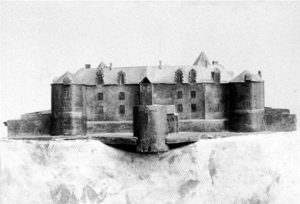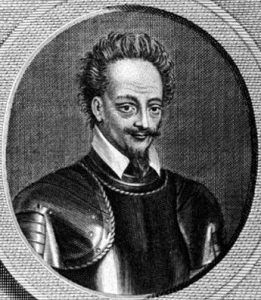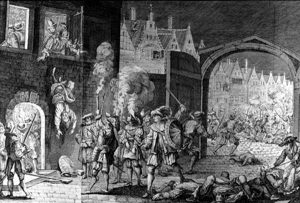Peaceful times
In many places, the edict of pacification was not implemented, for instance mixed chambers were not reinstated, worship places were not granted, not all leagues were disbanded. In order to consolidate peace, Catherine de Medici went on a new journey to meet the different parties, the main figures, and the governors.
In Autumn 1578, she travelled to the South-West and met the King of Navarre who gathered the representatives of the Churches of Languedoc. As the negotiation ended the treaty of Nérac was signed on the 28th of February 1579, clarifying the peace terms. The Protestants could build temples in place where worshipping was allowed. They were awarded about fifteen, instead of eight, for six months.
Negotiations were held in the midst of feasts, love intrigues, so that they were called the ‘war of lovers’. According to Agrippa d’Aubigné “Marguerite de Valois’s love intrigues caused hostilities to be revived.”
Times of War
The seventh war was not as wide-ranging as the previous ones. In November 1579 Prince Henri de Condé took La Fère in Normandy where he was the governor without authority over the Catholics. The troubles started again in Dauphiné and Provence was ransacked by gangs of looters. In April 1580 Henri de Navarre, chief of the Protestant party since 1576, rebelled against the provocations of Marshall of Biron, lieutenant-general of Guyenne. He took the city of Cahors after a three-day battle, a fair fight without looting, where he showed his courage. But the Huguenot people and its public figures did not follow, and the royal troops gained the upper hand. Henri de Navarre was confined in Cahors, and Henri de Condé in La Fère from which he escaped to go back to Germany. François de Lesdiguières was vanquished in Dauphiné.
A few sporadic conflicts still took place until the signing of the Treaty of Fleix on the 26th of November 1580, thus confirming the Edict of Poitiers. The Protestant stronghold towns had to be given back within six years. To many people the seventh war seemed ludicrous, driven by personal interests and rivalries.




